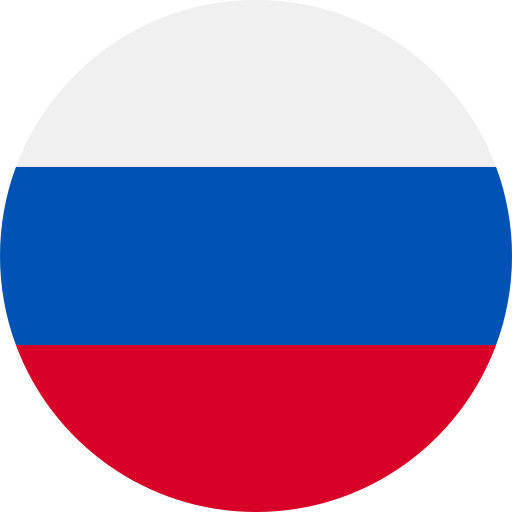Key Takeaways
- Diverse Dialects: Russian speech variations showcase a wide array of dialects and accents influenced by geographical regions, creating a rich linguistic tapestry.
- Phonetic Differences: Northern dialects feature softer consonants and elongated vowels, while southern dialects are characterized by sharp intonation patterns, reflecting regional identities.
- Cultural Influences: Local vocabulary often includes terms specific to historical influences or environmental contexts, highlighting the connection between language and culture.
- Sociolinguistic Factors: Speech variations are shaped by social class, education level, and urban versus rural lifestyles, affecting communication styles across different communities.
- Historical Context: Historical events have significantly impacted regional speech patterns, with some areas retaining archaic linguistic features that reveal the evolution of the Russian language.
- Enhanced Communication: Understanding these regional speech variations enriches appreciation for Russian culture and improves interactions within diverse communities.
Ever wondered why Russian sounds so different depending on where you are? Russian speech variations across regions reveal a fascinating tapestry of dialects and accents that can change the meaning of words. From the crisp tones of Moscow to the melodic lilt of Siberia, each area boasts unique linguistic quirks that reflect its culture and history.
Overview of Russian Speech Variations
Russian speech variations showcase rich diversity across regions, reflecting unique dialects and accents. Each region’s characteristics influence communication styles, making the language vibrant and multifaceted.
In Moscow, sharp tones dominate conversations. This urban accent often conveys a sense of assertiveness. Contrast this with Siberian speech, which tends to exhibit melodic qualities that create a more relaxed atmosphere. Cultural influences shape these differences; for example, Moscow’s fast-paced lifestyle fosters a direct communication style.
Further north in Russia’s rural areas, local dialects incorporate distinct vocabulary and pronunciation patterns. These variations can sometimes obscure meaning for those unfamiliar with them. Understanding these nuances enhances effective communication and fosters connections across various communities.
Interestingly, some regions maintain archaic linguistic features that offer insights into historical development. For instance, certain words may differ significantly from their modern counterparts due to geographical isolation over time. Recognizing these aspects provides a deeper appreciation for the language’s evolution.
Overall, familiarity with regional speech variations enriches your understanding of Russian culture while improving interactions within diverse communities.
Geographical Regions and Their Influence
Russian speech variations are deeply influenced by geographical regions, showcasing distinct dialects and accents. Understanding these regional nuances can enhance your appreciation for the language and its cultural context.
Northern Russian Dialects
Northern Russian dialects exhibit unique phonetic traits that set them apart from other regions. For example, speakers often use softer consonants and elongated vowels. These features create a melodic quality in speech, making it sound more fluid. In areas like Arkhangelsk or Vologda, local vocabulary includes terms derived from historical influences, reflecting the region’s past interactions with different cultures. This linguistic richness can sometimes pose challenges for those unfamiliar with these dialects.
Southern Russian Dialects
Southern Russian dialects present a contrasting style characterized by their assertiveness and distinctive intonation patterns. Regions such as Rostov-on-Don or Krasnodar showcase sharp accents that emphasize certain syllables, lending an energetic tone to conversations. The vocabulary here often incorporates words specific to agriculture and local traditions, enriching communication within communities but potentially confusing outsiders. Familiarity with these southern variations offers insights into the warm hospitality typical of the area’s culture.
Understanding these geographical influences on Russian speech enhances not just your language skills but also your grasp of regional identities within Russia.
Factors Contributing to Speech Variations
Speech variations in Russian stem from several factors that shape how language is used across different regions. Understanding these elements enhances your grasp of the nuances present in regional communication.
Historical Influences
Historical influences play a pivotal role in shaping regional speech patterns. Regions that experienced distinct historical events, such as invasions or cultural exchanges, often developed unique linguistic features. For example, areas with a strong Tatar influence exhibit vocabulary and pronunciation traits influenced by Turkic languages. Additionally, some regions retain archaic forms of speech that provide insights into the evolution of the Russian language itself. This rich tapestry of history contributes to the diverse ways Russians express themselves today.
Sociolinguistic Factors
Sociolinguistic factors deeply impact speech variations within Russia. Social class, education level, and urban versus rural living conditions all contribute to how individuals communicate. Urban centers like Moscow foster an assertive dialect marked by speed and clarity due to their fast-paced lifestyle. In contrast, rural areas often showcase more relaxed intonation and slower speech patterns reflective of local traditions and lifestyles. Moreover, interactions among different ethnic groups can introduce new words and phrases into everyday conversation, further enriching regional dialects.
Understanding these factors not only improves your appreciation for Russian speech but also aids in navigating conversations across various communities effectively.
Notable Features of Regional Speech
Regional speech variations in Russian showcase unique characteristics that reflect local culture and history. Understanding these features enhances your appreciation of the language’s diversity.
Phonetic Characteristics
Phonetic traits vary significantly across regions. Northern dialects often feature softer consonants and elongated vowels, contributing to a melodic quality. For instance, in areas like Arkhangelsk, you might notice a pronounced lilt that contrasts with the sharper intonation found in Moscow. In contrast, southern dialects exhibit more assertive intonation patterns. Rostov-on-Don and Krasnodar exemplify this with their strong emphasis on syllables, creating a vibrant soundscape that’s distinctly different from other regions.
Lexical Differences
Lexical variations provide insights into cultural influences within each region. Each area possesses unique vocabulary tied to its history and environment. For example, rural communities may use terms related to local agriculture or traditional crafts that urban speakers might not recognize. The influence of surrounding cultures also plays a role; some regions incorporate Tatar words reflecting historical interactions. This rich tapestry of language highlights how regional identity shapes communication styles throughout Russia.
Understanding these notable features can deepen your connection with the Russian language and enhance your ability to communicate effectively across diverse contexts.
Conclusion
Exploring the variations in Russian speech across regions reveals a fascinating linguistic landscape. Each accent and dialect carries its own unique charm reflecting local culture and history. By recognizing these differences you deepen your appreciation for Russia’s rich heritage.
Understanding regional speech patterns not only enhances your language skills but also enriches your interactions with locals. Whether you’re navigating the assertive tones of Moscow or the melodic sounds of Siberia each conversation becomes an opportunity to connect on a deeper level. Embrace these nuances as they open doors to better communication and cultural understanding throughout this diverse country.
Frequently Asked Questions
What are the main regional variations in the Russian language?
The Russian language features several regional variations, including distinct dialects and accents. Major differences can be observed between urban areas like Moscow, known for its sharp tones, and regions like Siberia, which has a more melodic speech pattern. These variations are shaped by local cultures and histories.
How do dialects affect communication in Russia?
Dialects significantly influence communication styles across Russia. For instance, Moscow’s assertive urban accent contrasts with the relaxed tone of Siberian speech. In rural areas, unique local vocabularies can sometimes obscure meaning for outsiders, highlighting the importance of understanding these linguistic nuances.
What phonetic traits define northern and southern Russian dialects?
Northern Russian dialects typically have softer consonants and elongated vowels that create a melodic quality. In contrast, southern dialects exhibit assertive intonation patterns with vocabulary often linked to agriculture and local traditions. These phonetic traits reflect the cultural identities of their respective regions.
How do historical events shape regional speech patterns in Russia?
Historical events such as invasions and cultural exchanges have played a significant role in shaping Russian regional speech patterns. Areas influenced by Tatar culture may display unique vocabulary and pronunciation traits that stem from these historical interactions.
Why is it important to understand regional speech variations in Russia?
Understanding regional speech variations enhances language skills and provides insights into diverse cultural identities within Russia. Familiarity with these differences improves communication effectiveness while fostering appreciation for the rich tapestry of Russian culture across various communities.







